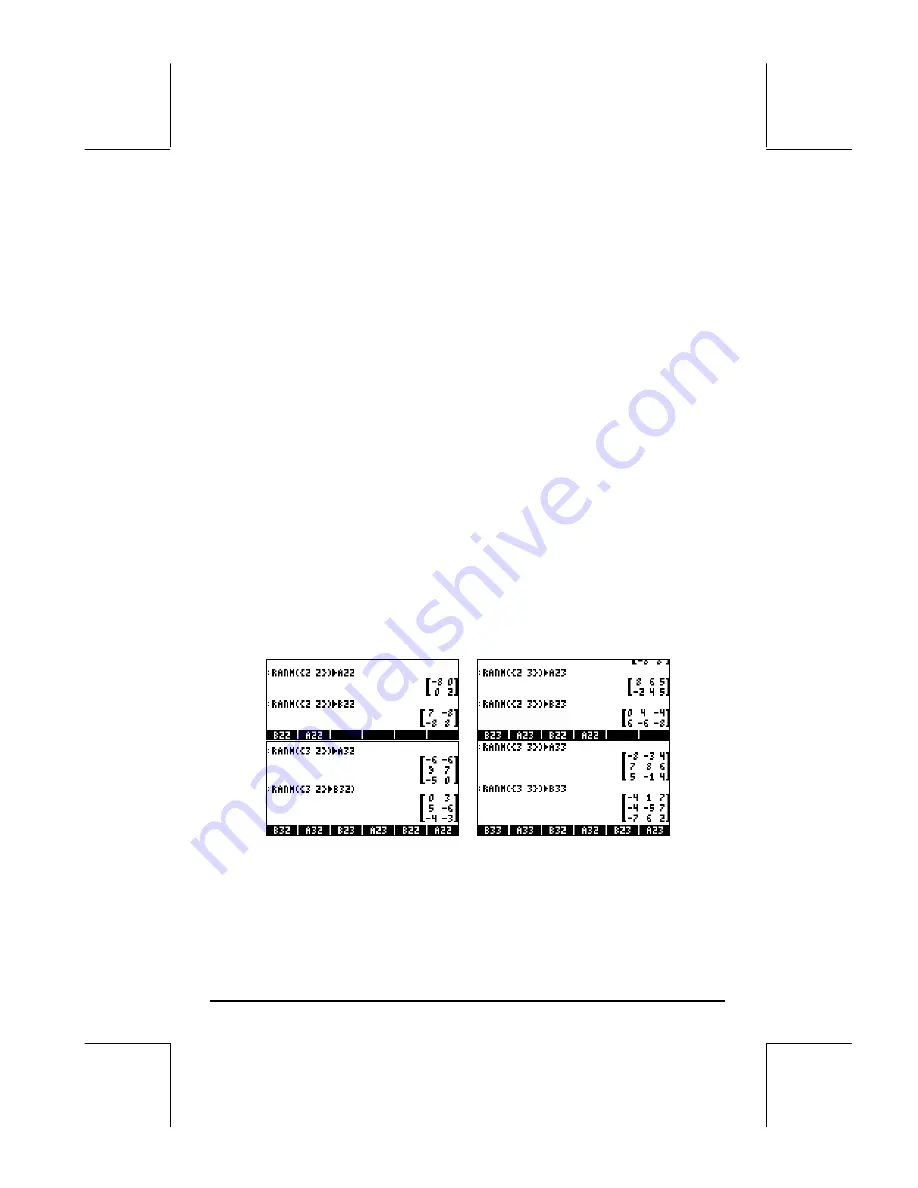
Page 11-1
Chapter 11
Matrix Operations and Linear Algebra
In Chapter 10 we introduced the concept of a matrix and presented a number
of functions for entering, creating, or manipulating matrices. In this Chapter
we present examples of matrix operations and applications to problems of
linear algebra.
Operations with matrices
Matrices, like other mathematical objects, can be added and subtracted.
They can be multiplied by a scalar, or among themselves. An important
operation for linear algebra applications is the inverse of a matrix. Details of
these operations are presented next.
To illustrate the operations we will create a number of matrices that we will
store in variables. The generic name of the matrices will be A
ij
and B
ij
,
where
i
represents the number of rows and
j
the number of columns of the
matrices. The matrices to be used are generated by using function RANM
(random matrices). If you try this exercise in your calculator you will get
different matrices than the ones listed herein, unless you store them into your
calculator exactly as shown below. Here are the matrices A22, B22, A23,
B23, A32, B32, A33 and B33 created in ALG mode:
In RPN mode, the steps to follow are:
{2,2}
`
RANM
'A22'
K
{2,2}
`
RANM
'B22'
K
{2,3}
`
RANM
'A23'
K
{2,3}
`
RANM
'B23'
K
{3,2}
`
RANM
'A32'
K
{3,2}
`
RANM
'B32'
K
{3,3}
`
RANM
'A33'
K
{3,3}
`
RANM
'B33'
K
















































